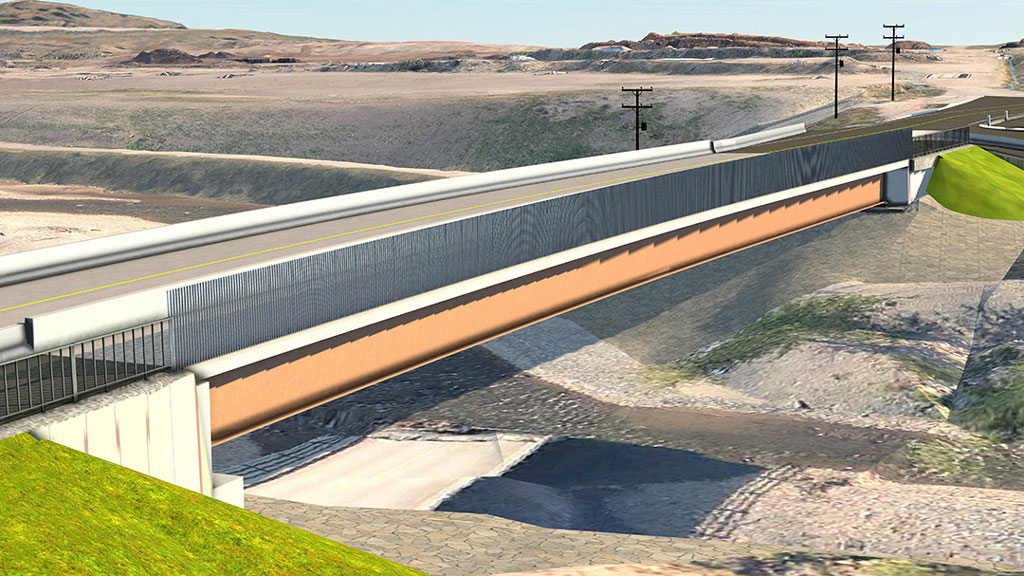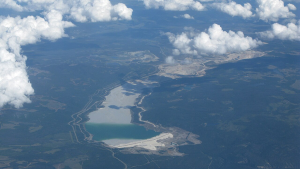Construction crews have completed demolition work at the flood-damaged Middlesboro Bridge on Voght Street in Merritt, B.C., and are preparing to build a new span.
The bridge was knocked off its northern abutment when the Coldwater River ultimately changed its course during an unprecedented atmospheric river event in November 2021 and debris hit the structure.
The $14-million Middlesboro Bridge project includes removal of the bridge deck, all abutments and the asphalt between the structure and a nearby sanitary dump station, along with construction of a new crossing.
“Demolition of the remaining superstructure is now complete, and the core of the bridge building work is scheduled between April 2024 and December 2024, with the goal to allow traffic in November 2024,” explains Sean Strang, director of flood recovery and mitigation at the City of Merritt.
The bridge was destroyed and local roads and highways were damaged when high water levels, exacerbated by a melting snowpack from the Coldwater headwaters, spilled over the local diking system.
New bridge higher and stronger
The new bridge will be built to modern standards, at 1.5 metres higher than the original structure, and be capable of withstanding a one-in-100-year flood event, accommodating a 65-per-cent increase in water volume. It will be a double-lane, 68.5-metre-long span with a dedicated pedestrian and cyclist lane.
The bridge will be a clear-span structure with no centre pier in the middle of the river. Such a structure is more environmentally friendly, faster to build and allows greater water flow in the event of flooding.
“Much like the bridges along B.C.’s Coquihalla Highway, this bridge was built with a floating abutment design,” says Strang. “While the water level did not touch the low chord of the bridge, there was some debris hits to the structure during the highest water.
“The final failure mode of the bridge, however, was a significant whirlpool on the upstream northern bank, causing the undermining of the abutment, and 48 per cent of the superstructure fell into the river.”
Multiple dikes that were built to retain a much lower level of water failed during the flood, resulting in widespread flooding and inundating more than 640 houses. The entire city was evacuated due to inundation of wastewater and water treatment plants, and an inability to operate essential services.
A proposal and cost estimate for the bridge work was submitted in 2022. The Ministry of Municipal Affairs is contributing $9.6 million and the Ministry of Emergency Management and Climate Readiness is adding additional funds from its Disaster Financial Assistance program.
What makes up the new bridge design?
Emil Anderson Construction did the demolition and is contractor on the bridge rebuild.
The demolition was designed and scheduled to allow containments to be built using river coble, grain bags and aggregate around the concrete elements so they could be demolished without debris entering the waterway.
“It will be a much more robust and environmentally resilient bridge, founded on deep pile foundations under the abutments and steel girders which are much more resistant to impacts or potential flood events,” the company said in a statement. “Additionally, the project includes improved grading drainage features.”
According to the contractor, there are many design elements of the bridge that are both conducive to a sound and functional structural design, but also will aid in reducing the overall project schedule. The elements include precast, full-depth deck panels, the fact no centre pier is to be constructed in the waterway, and an asphalt overlay of the bridge deck.
“Reducing field-placed concrete later in the season and eliminating the in-river work of a centre pier reduced the schedule risk and allows critical path items to occur concurrently,” Emil Anderson stated.
A vital connection
The work has taken some time to start because of funding. The original bridge was not an insured asset, so no money was originally identified for the rebuild. To add complexity, the new structure had to be designed to withstand flow levels approximately 2.6 times higher than the previous structure.
“This made funding extremely challenging, and the Province of B.C., through Emergency Management and Climate Readiness, was instrumental in working with city staff to get funding,” says Strang. “Additionally, significant input from community members and surrounding Indigenous community was received on the desire to reduce impact within the river envelope.”
The work was awarded under a design-build contract.
The City of Merritt said in a statement the municipality is excited to see the Middlesboro Bridge come to fruition.
“Thanks to 100-per-cent funding from the Ministry of Municipal Affairs and the Ministry of Emergency Management and Climate Readiness, the City of Merritt is able to build the Middlesboro Bridge back to better, more resilient standards.
“We look forward to seeing it opened to traffic by the end of year and re-establishing this vital connection to the city’s southern neighbourhood.”











Recent Comments